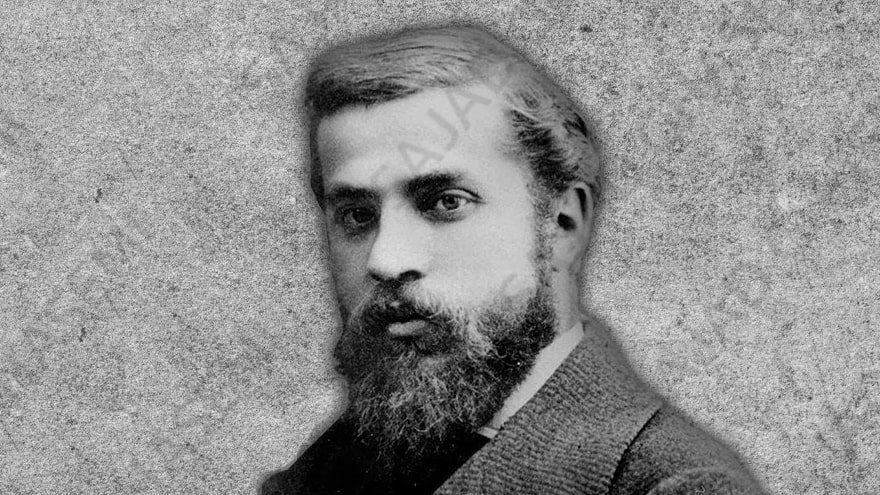
Antoni Gaudí, a visionary architect whose work has left an indelible mark on the world, was born on June 25, 1852, in Reus, Catalonia, Spain. From an early age, Gaudí showed a keen interest in nature and art, foreshadowing the organic forms and innovative techniques that would come to define his architectural masterpieces.
Early Life and Education
Gaudí’s passion for architecture led him to pursue studies at the Provincial School of Architecture in Barcelona, where he graduated in 1878. His early works reflected the prevailing architectural trends of the time but also hinted at his burgeoning individuality and creativity.
Emergence as a Singular Architect
Gaudí’s breakthrough came with his design for the Güell Palace, commissioned by his patron and friend, Eusebi Güell. This project marked the beginning of a fruitful collaboration and provided Gaudí with the opportunity to experiment with unconventional architectural elements and materials.
Artistic Vision and Symbolism
Throughout his career, Gaudí drew inspiration from nature, religion, and Catalan culture. His deep spirituality and reverence for the natural world infused his work with symbolic meaning and transcendent beauty. From the towering spires of the Sagrada Família to the whimsical curves of Park Güell, Gaudí’s architecture speaks to the harmony between man, nature, and the divine.
Unfinished Masterpiece: The Sagrada Família
Arguably Gaudí’s most ambitious project, the Sagrada Família remains a work in progress to this day. Conceived as a monumental basilica dedicated to the Holy Family, the Sagrada Família embodies Gaudí’s vision of transcendent beauty and spiritual symbolism. Despite his untimely death in 1926, Gaudí’s disciples have continued his work, striving to realize his dream of a sacred space that inspires awe and reverence.
Legacy and Influence
Antoni Gaudí’s legacy extends far beyond his architectural achievements. His innovative use of organic forms, structural innovation, and meticulous attention to detail have inspired generations of architects and artists. Today, Gaudí’s works are celebrated as UNESCO World Heritage Sites and continue to captivate millions of visitors from around the globe.
Discovering the Masterpieces of Antoni Gaudi
Antoni Gaudí, the renowned Catalan architect, left an indelible mark on the world with his distinctive style, innovative techniques, and profound connection to nature and religion. His works, characterized by intricate details, vibrant colors, and organic shapes, continue to inspire awe and admiration. Here, we explore five of Gaudí’s most iconic creations, each a testament to his genius and vision.
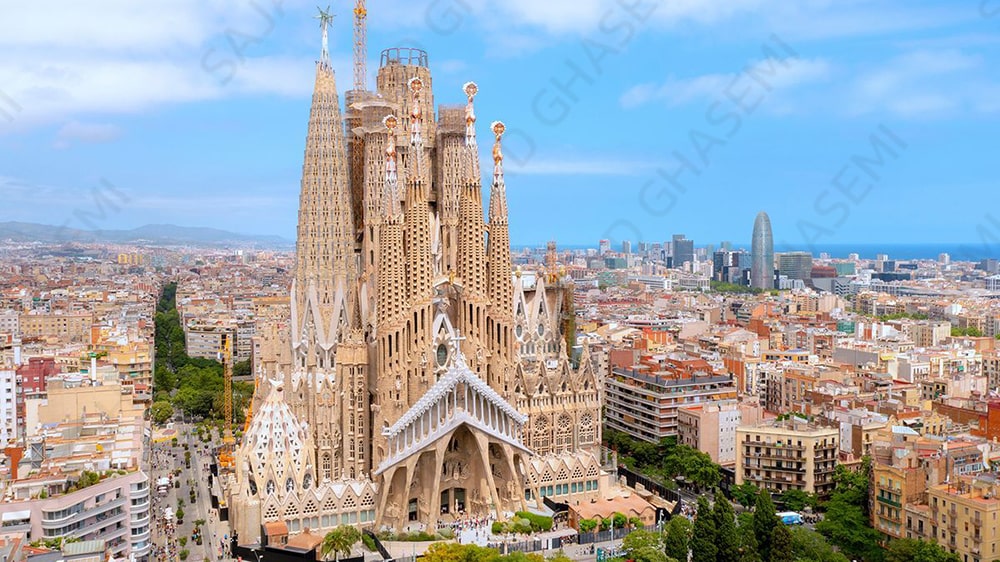
1.Sagrada Família (Basilica and Expiatory Church of the Holy Family)
The Sagrada Família, officially known as the Basilica and Expiatory Church of the Holy Family, is one of the most iconic and enduring symbols of Barcelona, Spain. Designed by the visionary architect Antoni Gaudí, this monumental basilica has captivated the world with its awe-inspiring beauty, intricate details, and profound spiritual significance.
The Sagrada Família is a masterpiece of Modernisme, a Catalan architectural movement characterized by its innovative forms and integration of natural elements. Construction began in 1882 under the direction of architect Francisco de Paula del Villar, but Gaudí took over the project shortly thereafter and imbued it with his unique vision.
What sets the Sagrada Família apart is its distinctive blend of Gothic and Art Nouveau styles, combined with Gaudí’s unparalleled creativity and imagination. The basilica’s façades are adorned with intricate sculptures, elaborate carvings, and ornate details inspired by nature and religious symbolism.
Gaudí conceived the Sagrada Família as a sacred space that would serve as a testament to the Christian faith and a celebration of the glory of God. Each aspect of the basilica’s design carries symbolic meaning, from the towering spires representing the apostles to the intricate façades depicting scenes from the Bible.
One of the most remarkable aspects of the Sagrada Família is its innovative construction techniques. Gaudí pioneered the use of hyperboloid structures, catenary arches, and inclined columns to achieve unprecedented heights and create a sense of ethereal beauty.
Despite Gaudí’s death in 1926, construction of the Sagrada Família has continued thanks to the dedication of architects, artisans, and volunteers. Today, the basilica remains a work in progress, with an estimated completion date set for 2026, the centenary of Gaudí’s death.
Millions of visitors from around the world flock to the Sagrada Família each year to marvel at its beauty and explore its sacred spaces. Guided tours offer insights into Gaudí’s life and work, while the basilica’s towers provide panoramic views of Barcelona.
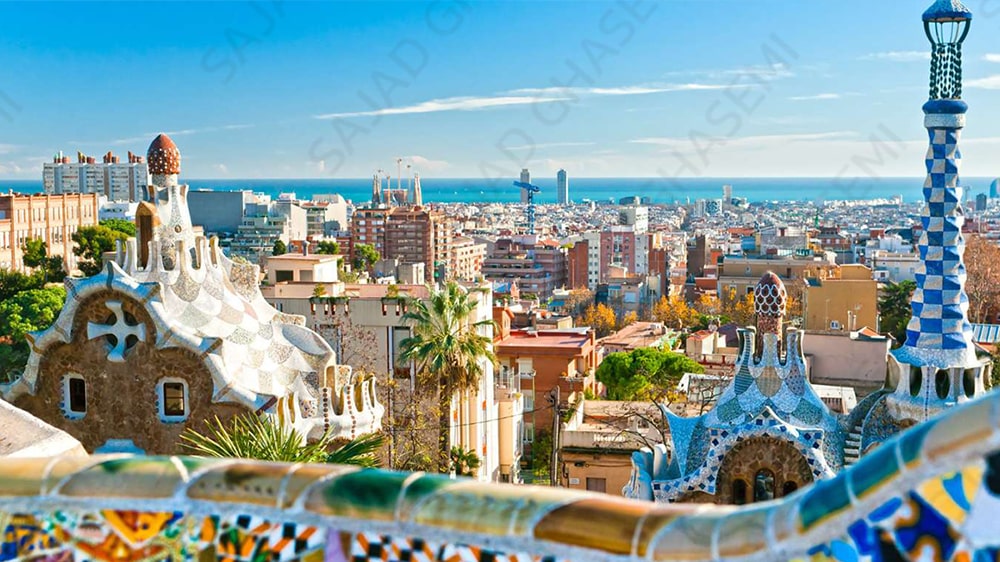
2.Park Güell
Park Güell, located atop the hills of Barcelona, Spain, is a testament to the creative genius of the Catalan architect Antoni Gaudí. This whimsical public park, designated as a UNESCO World Heritage Site, showcases Gaudí’s innovative architectural style, playful imagination, and deep connection to nature.
Designed between 1900 and 1914, Park Güell is a harmonious blend of natural forms and man-made structures. Gaudí seamlessly integrated the park’s terraces, pathways, and architectural elements with the surrounding landscape, creating a surreal environment that invites exploration and contemplation.
One of the most striking features of Park Güell is its vibrant ceramic mosaic tiles, known as “trencadís,” which adorn benches, sculptures, and buildings throughout the park. These colorful mosaics, made from recycled ceramic shards, add a sense of whimsy and vitality to the surroundings.
At the heart of Park Güell lies the Sala Hipóstila, a forest of towering Doric columns supporting a mosaic-covered ceiling. This monumental space was originally intended as a marketplace but now serves as a gathering place for visitors. Nearby, the iconic Serpentine Bench winds its way around the perimeter of the square, offering panoramic views of the city below.
Within Park Güell, visitors can explore Gaudí’s former residence, now converted into a museum dedicated to his life and work. The adjacent Nature Square, with its undulating bench adorned with mosaic tiles, provides a tranquil setting for reflection and relaxation.
Like many of Gaudí’s works, Park Güell is infused with spiritual symbolism and allegory. The park’s main entrance, flanked by two whimsical pavilions resembling gingerbread houses, is adorned with a mosaic dragon, symbolizing the struggle between good and evil.
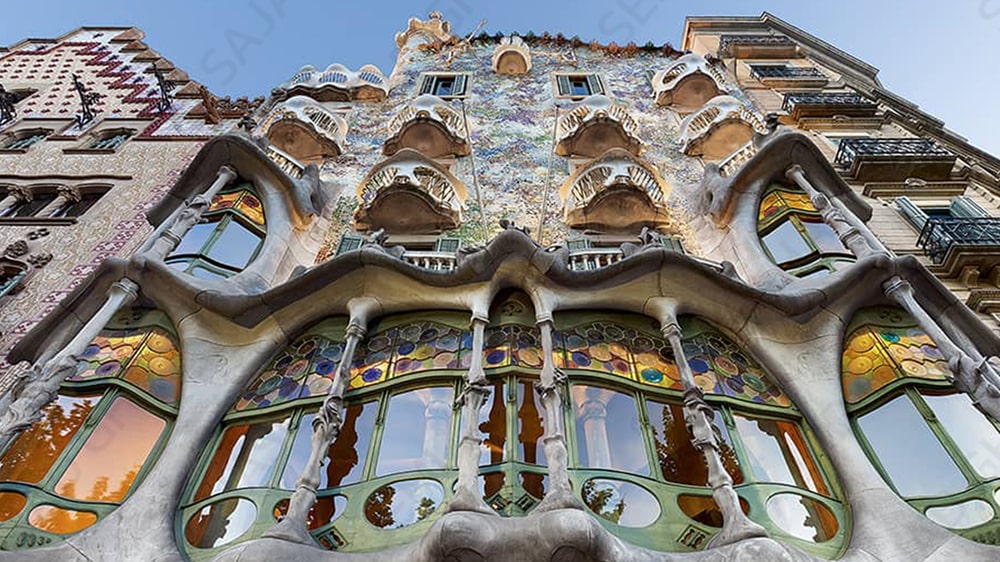
3.Casa Batlló
Casa Batlló, a masterpiece of Modernisme located in the heart of Barcelona, Spain, stands as a testament to the visionary genius of the Catalan architect Antoni Gaudí. This iconic building, known for its whimsical façade and imaginative design, is a celebration of Gaudí’s innovative approach to architecture and his deep connection to Catalan culture.
Constructed between 1904 and 1906, Casa Batlló is a prime example of Gaudí’s organic style, characterized by flowing lines, vibrant colors, and intricate details. The building’s façade, composed of undulating stone and glass, resembles a surrealistic dream, with whimsical balconies and sculpted columns evoking the motion of waves and marine life.
Gaudí drew inspiration from the natural world in his design for Casa Batlló, incorporating motifs reminiscent of bones, scales, and aquatic creatures. The roof terrace, with its sculpted chimney stacks resembling the back of a dragon, is a striking example of Gaudí’s playful imagination and attention to detail.
Inside Casa Batlló, visitors are greeted with a world of enchantment and wonder. The main staircase, adorned with a mesmerizing blue ceramic mosaic, leads to the principal floor, where rooms are flooded with natural light and adorned with intricate woodwork, stained glass, and decorative tiles.
Like many of Gaudí’s works, Casa Batlló is rich in symbolic meaning and allegory. The building’s façade is said to represent the legend of Saint George and the dragon, with the balconies symbolizing the scales of the dragon and the turret resembling the lance of the saint.
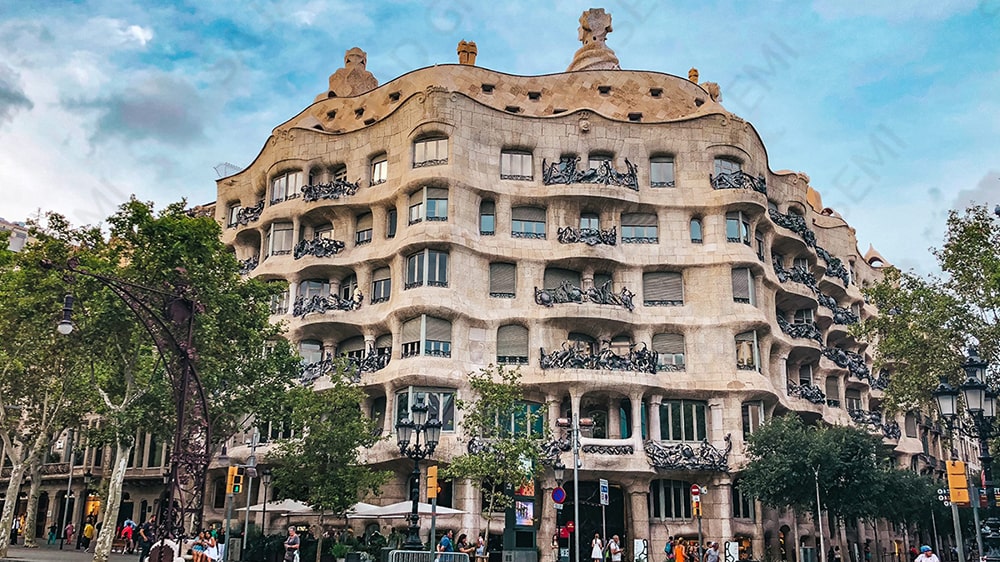
4.Casa Milà (La Pedrera)
Casa Milà, commonly known as La Pedrera, is a breathtaking architectural gem nestled in the heart of Barcelona, Spain. Designed by the visionary architect Antoni Gaudí, this UNESCO World Heritage Site stands as a testament to Gaudí’s innovative genius and his profound impact on Catalan Modernisme.
Constructed between 1906 and 1912, Casa Milà is hailed as one of Gaudí’s most daring and imaginative creations. The building’s undulating façade, composed of rough-hewn stone, gives the impression of a natural rock formation, earning it the nickname “La Pedrera,” which translates to “the stone quarry.”
Gaudí’s signature style is evident throughout Casa Milà, with its fluid lines, biomorphic shapes, and fantastical elements. The rooftop terrace is adorned with surreal sculptures and chimneys resembling warriors and sentinels, while the interior features sinuous walls, curved ceilings, and whimsical details inspired by nature.
One of the most remarkable aspects of Casa Milà is its innovative construction techniques. Gaudí employed a variety of structural innovations, including self-supporting stone façades, double-skinned walls for improved insulation, and an underground garage—a groundbreaking feature at the time.
As with many of Gaudí’s works, Casa Milà is imbued with profound symbolism and spiritual meaning. The building’s design is thought to reflect Gaudí’s reverence for nature, with elements such as the rooftop resembling a surrealist garden and the undulating façade representing the natural landscape.
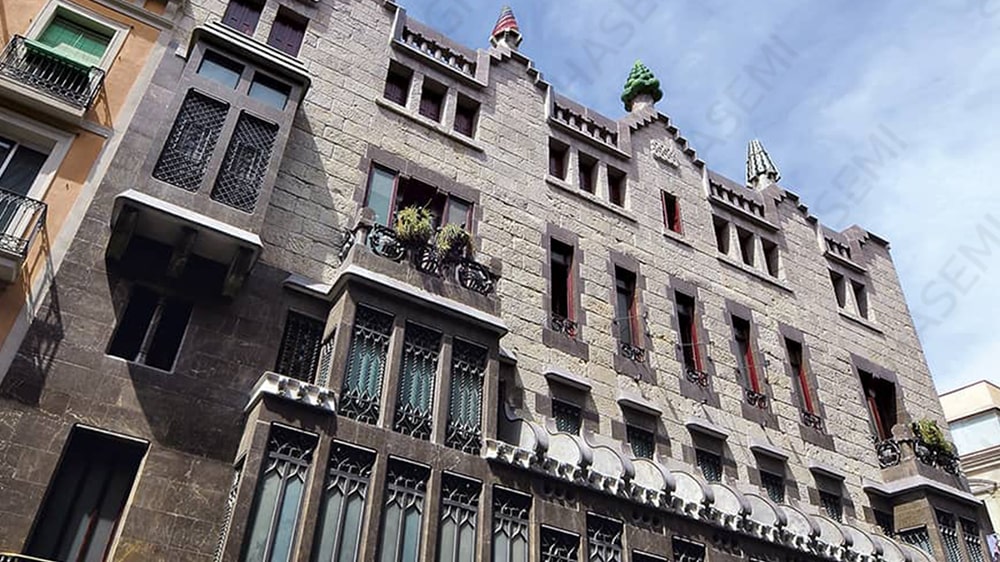
5.Palau Güell
Palau Güell, a magnificent palace nestled in the heart of Barcelona, Spain, stands as a testament to the visionary genius of the Catalan architect Antoni Gaudí. Designed in the late 19th century for the industrial tycoon Eusebi Güell, this UNESCO World Heritage Site showcases Gaudí’s innovative approach to architecture and his mastery of space, light, and form.
Constructed between 1886 and 1890, Palau Güell is hailed as one of Gaudí’s early masterpieces and a prime example of Catalan Modernisme. The palace’s façade, with its elaborate wrought-iron gates and fantastical chimneys, exudes an air of opulence and grandeur, reflecting the wealth and status of its original owner.
Gaudí’s meticulous attention to detail is evident throughout Palau Güell, from the ornate ceilings and carved woodwork to the colorful mosaic tiles and stained glass windows. Each element is infused with symbolic meaning, reflecting Gaudí’s deep spirituality and reverence for Catalan culture.
One of the most remarkable features of Palau Güell is its innovative design, which incorporates a variety of architectural elements inspired by nature and tradition. The central hall, crowned by a spectacular dome adorned with celestial motifs, serves as the focal point of the palace and a testament to Gaudí’s structural ingenuity.
Today, Palau Güell serves as a cultural center and museum dedicated to Gaudí’s life and work. Visitors can explore the palace’s ornate rooms, including the lavish reception hall, the elegant drawing room, and the intimate chapel. Guided tours offer insights into Gaudí’s creative process and the historical context of Palau Güell.
Palau Güell stands as a testament to Antoni Gaudí’s enduring legacy and his profound impact on the world of architecture. With its innovative design, intricate details, and rich symbolism, the palace continues to inspire awe and admiration in all who visit, ensuring Gaudí’s place as one of history’s greatest architects.
Conclusion
Antoni Gaudí, the visionary Catalan architect, left an indelible mark on the world with his innovative and imaginative approach to architecture. His masterpieces, including the Sagrada Família, Park Güell, Casa Batlló, Casa Milà (La Pedrera), and Palau Güell, continue to captivate and inspire people from around the globe.
Gaudí’s architecture is characterized by its organic forms, intricate details, and profound symbolism. Inspired by nature, religion, and Catalan culture, his designs transcend mere buildings, becoming works of art that evoke awe and wonder.
Innovative construction techniques, such as hyperboloid structures, catenary arches, and trencadís mosaics, set Gaudí’s work apart and push the boundaries of architectural expression.
Gaudí’s legacy extends far beyond his architectural achievements. His profound spirituality, dedication to craftsmanship, and commitment to social and environmental responsibility serve as enduring inspirations for architects, artists, and dreamers alike.
